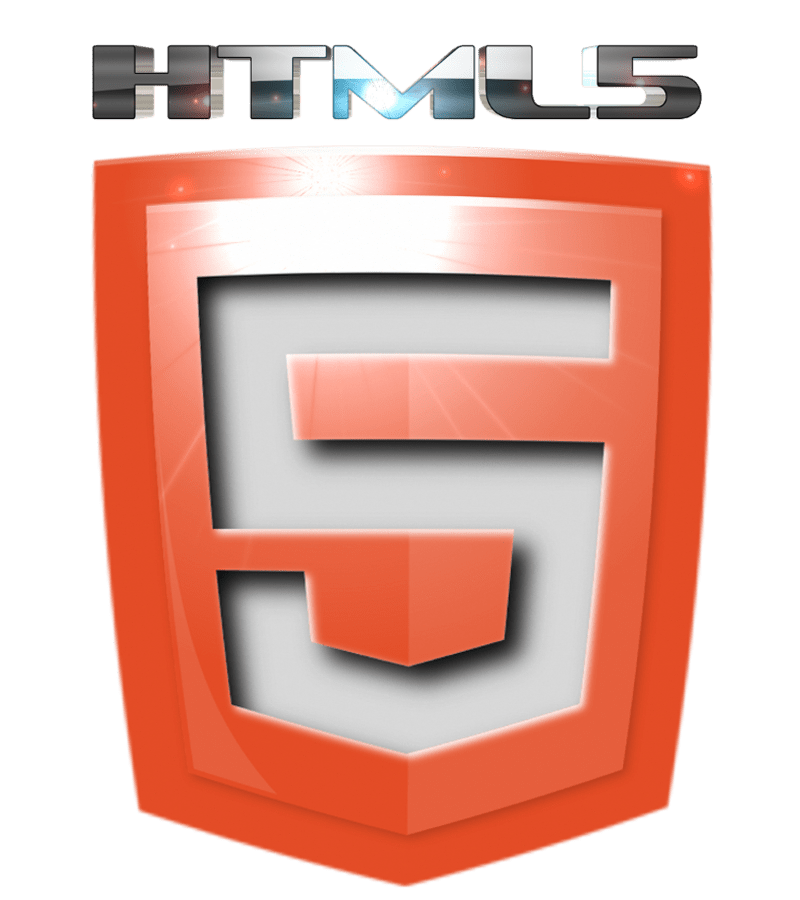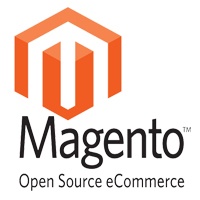
CSS3 and HTML5
Category : Latest Technologies , Posts , Website Design
Staying Ahead of the Curve: The Evolution of CSS and HTML in Web Design
In the dynamic world of web design, staying stagnant is not an option. Over the past decade or two, the languages that form the backbone of web design, CSS (Cascading Style Sheets) and HTML (Hypertext Markup Language), have undergone significant evolution. At Saxon Websites™, we pride ourselves on not just keeping up with these changes but leading the pack in incorporating the latest versions and techniques into our projects. CSS, once primarily used for basic styling, has evolved into a robust language that enables complex layouts, animations, and interactivity. With the advent of preprocessors like SCSS and SASS, we've been able to streamline our workflow and write more maintainable code. These preprocessors allow us to use variables, mixins, and nesting, making our CSS code more organized and efficient.

HTML has also seen its fair share of advancements. From the introduction of HTML5, which brought new semantic elements and improved multimedia support, to the latest specifications that focus on accessibility and performance, HTML continues to evolve to meet the demands of modern web development. One of the key aspects of our approach is our commitment to embracing these changes and incorporating them into our projects from the get-go. While some of our competitors may be stuck in outdated practices, we're constantly exploring new possibilities and pushing the boundaries of what's possible with CSS and HTML.

Our team is well-versed in utilizing the latest features and best practices of CSS and HTML to create stunning and functional websites. Whether it's leveraging CSS Grid for responsive layouts or using HTML semantics for better SEO, Saxon Websites™ ensures that every website we build is not just visually appealing but also optimized for performance and accessibility.
The landscape of web design is constantly evolving, and it's crucial for web design companies to adapt and evolve along with it. By staying at the forefront of CSS and HTML advancements, we empower our clients with websites that not only meet but exceed their expectations in terms of design, functionality, and performance.







 Company A called us and asked to help them increase productivity, their website was not performing even though they had a number one position in the search engines. Analysis of their site showed clearly that although customers were placing products in their basket (which indicates an intention to purchase), they would often abandon and leave the site. Further research showed exactly where they were leaving and the solution was to offer a ‘purchase without creating an account’ option. This websites account creation form was off-putting and when the obstacle was removed – they saw a marked increase in sales conversion.
Company A called us and asked to help them increase productivity, their website was not performing even though they had a number one position in the search engines. Analysis of their site showed clearly that although customers were placing products in their basket (which indicates an intention to purchase), they would often abandon and leave the site. Further research showed exactly where they were leaving and the solution was to offer a ‘purchase without creating an account’ option. This websites account creation form was off-putting and when the obstacle was removed – they saw a marked increase in sales conversion.
 A large percentage of websites that you visit will have Google Analytics code embedded within them which affords Google the ability to track and record certain information about your browsing activities. This information is then used by Google to supply targeted advertising to its customers in the form of AdWords. The AdWords interface allows a customer to access this statistical information and place their advert in front of customers, categorised as being likely to purchase their product or service - as opposed to an indiscriminate ‘view and hope’ campaign. The facility accommodates budgets and allows you to set spending limits. AdWords will also allow you to target Geographical areas, it provides the ability to display adverts at certain times of the day and has many other useful features that enable a customer to get value for money from their advertising budget.
A large percentage of websites that you visit will have Google Analytics code embedded within them which affords Google the ability to track and record certain information about your browsing activities. This information is then used by Google to supply targeted advertising to its customers in the form of AdWords. The AdWords interface allows a customer to access this statistical information and place their advert in front of customers, categorised as being likely to purchase their product or service - as opposed to an indiscriminate ‘view and hope’ campaign. The facility accommodates budgets and allows you to set spending limits. AdWords will also allow you to target Geographical areas, it provides the ability to display adverts at certain times of the day and has many other useful features that enable a customer to get value for money from their advertising budget. There are many companies who specialise in using AdWords and AdSense for a living and although their services will also need to be paid for – many businesses opt for using someone who knows what they are doing. Saxon Websites concurs on this point … we advise that it is better to be safe than sorry, and remember that paying for advertising isn’t suitable for everyone. We will take a look at your product range or services and with the knowledge that we’ve gained through years of experience, advise you if we believe you are likely to get a good return on investment (ROI) … or not. In addition to providing targeted advertising, a well thought-out AdWords campaign can benefit a company in regard to SEO … providing valuable back-links which can enhance a websites ranking. Please be aware that the back-links will disappear soon after you stop advertising, so this benefit should be regarded as temporary help only and a ‘perk’ for using the manufacturers products.
There are many companies who specialise in using AdWords and AdSense for a living and although their services will also need to be paid for – many businesses opt for using someone who knows what they are doing. Saxon Websites concurs on this point … we advise that it is better to be safe than sorry, and remember that paying for advertising isn’t suitable for everyone. We will take a look at your product range or services and with the knowledge that we’ve gained through years of experience, advise you if we believe you are likely to get a good return on investment (ROI) … or not. In addition to providing targeted advertising, a well thought-out AdWords campaign can benefit a company in regard to SEO … providing valuable back-links which can enhance a websites ranking. Please be aware that the back-links will disappear soon after you stop advertising, so this benefit should be regarded as temporary help only and a ‘perk’ for using the manufacturers products.






 Blogger is not really a CMS, it’s more of a Blogging platform owned by Google – but it does have a substantial following and websites using Blogger are popping up all over the place. There are some great templates and gadgets available. Its use is limited and the fact that it’s a ‘closed’ system and it’s hosted on their server makes Blogger very inflexible.
Blogger is not really a CMS, it’s more of a Blogging platform owned by Google – but it does have a substantial following and websites using Blogger are popping up all over the place. There are some great templates and gadgets available. Its use is limited and the fact that it’s a ‘closed’ system and it’s hosted on their server makes Blogger very inflexible. DNN is a CMS based on the Microsoft Technology stack and has a great 'drag-and-drop' user-friendly Administration interface. It has a big following, mainly due to aggressive marketing by the company rather than natural developer choice. DNN now has two commercial editions besides its open-source version and it will be interesting to see if the good scripts remain open-source or migrate to ‘available with licensed version only’ in the near future.
DNN is a CMS based on the Microsoft Technology stack and has a great 'drag-and-drop' user-friendly Administration interface. It has a big following, mainly due to aggressive marketing by the company rather than natural developer choice. DNN now has two commercial editions besides its open-source version and it will be interesting to see if the good scripts remain open-source or migrate to ‘available with licensed version only’ in the near future. A favourite with developers, this CMS has a lot going for it and is ranked #3 behind WordPress and Magento for popularity. The Administration and Editing interface takes a little while to figure out and there is a learning curve – finding items can be difficult at first. It has plenty of Plug-ins and Templates and is pretty flexible.
A favourite with developers, this CMS has a lot going for it and is ranked #3 behind WordPress and Magento for popularity. The Administration and Editing interface takes a little while to figure out and there is a learning curve – finding items can be difficult at first. It has plenty of Plug-ins and Templates and is pretty flexible. Built around CodeIgniter, an open-source PHP framework – this CMS is expandable and versatile with some powerful features. It doesn’t have a large amount of themes or add-on modules readily available, but those it does have, are ‘quality’ in the main. Needs a healthier developer contribution community.
Built around CodeIgniter, an open-source PHP framework – this CMS is expandable and versatile with some powerful features. It doesn’t have a large amount of themes or add-on modules readily available, but those it does have, are ‘quality’ in the main. Needs a healthier developer contribution community. Not sure why this CMS is ranked #4 for popularity, pretty much a developers nightmare. It does have a neat graphical user interface for administration to be fair, although trying to find your way around is another matter. Looks user friendly – but actually isn’t. On the plus side, there are some neat contributions and it can be quite powerful if you rewrite the core files … which sort of defeats the object we think.
Not sure why this CMS is ranked #4 for popularity, pretty much a developers nightmare. It does have a neat graphical user interface for administration to be fair, although trying to find your way around is another matter. Looks user friendly – but actually isn’t. On the plus side, there are some neat contributions and it can be quite powerful if you rewrite the core files … which sort of defeats the object we think. Magento has gone the way DNN appears to be going unfortunately, a great product which started its days as open-source, but, now comes in two flavours – one of which is commercial of course and can get expensive (so only really viable for medium-large companies). The free version is limited and code-heavy, which could lead to performance problems if you do not have a robust server.
Magento has gone the way DNN appears to be going unfortunately, a great product which started its days as open-source, but, now comes in two flavours – one of which is commercial of course and can get expensive (so only really viable for medium-large companies). The free version is limited and code-heavy, which could lead to performance problems if you do not have a robust server. Constructed with modularity in mind, this open-source content management system is supported with thousands of scripts and can easily produce large content-rich sites. It is not the easiest CMS to install or manage however and can be heavy on resources due to size and an extremely comprehensive/robust file structure. Maybe a bit over-kill for some applications.
Constructed with modularity in mind, this open-source content management system is supported with thousands of scripts and can easily produce large content-rich sites. It is not the easiest CMS to install or manage however and can be heavy on resources due to size and an extremely comprehensive/robust file structure. Maybe a bit over-kill for some applications. vBulletin is a commercial platform with which you can create fantastic community websites. An extremely powerful, application-specific software which is tuned into a growing market. This CMS is expensive to license and so has limited usage due to cost and lack of flexibility.
vBulletin is a commercial platform with which you can create fantastic community websites. An extremely powerful, application-specific software which is tuned into a growing market. This CMS is expensive to license and so has limited usage due to cost and lack of flexibility. WordPress has evolved from being just blogging software into a neat, flexible Content Management System. It has an excellent developer following and there are plenty of contributions to choose from, unfortunately not all good – so be careful. The Administration and Editing interface is very user friendly, making this CMS extremely popular.
WordPress has evolved from being just blogging software into a neat, flexible Content Management System. It has an excellent developer following and there are plenty of contributions to choose from, unfortunately not all good – so be careful. The Administration and Editing interface is very user friendly, making this CMS extremely popular. Zen Cart prefer their software to be categorised as being ‘Shopping Cart Software’. Fine – still a quality CMS in our books though. Not very user friendly to be honest, however, the core files are nicely laid out and accessible for modification - you really can do almost anything with it. Perfect for building bespoke systems and probably the best for ecommerce websites.
Zen Cart prefer their software to be categorised as being ‘Shopping Cart Software’. Fine – still a quality CMS in our books though. Not very user friendly to be honest, however, the core files are nicely laid out and accessible for modification - you really can do almost anything with it. Perfect for building bespoke systems and probably the best for ecommerce websites.